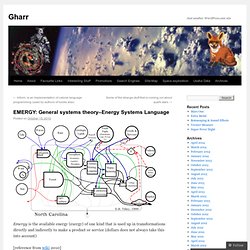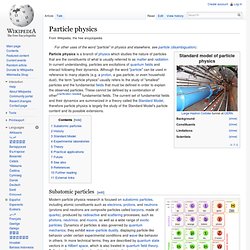

Earth. Other. New Stuff in process of being placed. Neural Networks < Electrical Engineering in the Yahoo. Spiders in Space – The Sequel! 3D Printing and Design. Education. General Science. Science maldives. Maldives Science Society. EurekAlert! - Science News. HowStuffWorks - Learn How Everything Works!
MathWorks - MATLAB and Simulink for Technical Computing. EMERGY: General systems theory–Energy Systems Language. Emergy is the available energy (exergy) of one kind that is used up in transformations directly and indirectly to make a product or service (dollars does not always take this into account) [reference from wiki 2010] In the 1990s in the latter part of his career H.T.

Odum together with David M. Scienceman developed the ideas of emergy, as a specific use of the term Embodied energy. Some consider the concept of “emergy”, sometimes briefly defined as “energy memory”, as one of Odum’s more significant contributions. [reference wiki 2010] Also check out for down load and computer models. I will be expanding this section eventually. Some of the references to be read are: This video and possibly others might be examined as well: Shortened Link to this Article: EMERGY: General systems theory–Energy Systems Language - Like this: Like Loading...
Technology News - Computers, Internet, Invention and Innovation Tech. <p id="disabled-js-msg">Please enable JavaScript to view CNN Tech.

</p> Our Terms of Service and Privacy Policy have changed. By continuing to use this site, you are agreeing to the new Privacy Policy and Terms of Service. To CNNMoney businessculturegadgetsfuturestartupsTo CNNMoney Hacks at Russian central bank have cost 2 billion rubles Holiday Gift Guide: Wireless headphones. Science Daily: News & Articles in Science, Health, Environment & Technology.
Physics. Particle physics. Subatomic particles[edit] Modern particle physics research is focused on subatomic particles, including atomic constituents such as electrons, protons, and neutrons (protons and neutrons are composite particles called baryons, made of quarks), produced by radioactive and scattering processes, such as photons, neutrinos, and muons, as well as a wide range of exotic particles.

Dynamics of particles is also governed by quantum mechanics; they exhibit wave–particle duality, displaying particle-like behavior under certain experimental conditions and wave-like behavior in others. In more technical terms, they are described by quantum state vectors in a Hilbert space, which is also treated in quantum field theory. Following the convention of particle physicists, the term elementary particles is applied to those particles that are, according to current understanding, presumed to be indivisible and not composed of other particles.[1] History[edit] Standard Model[edit] Theory[edit] Future[edit] SLAC National Accelerator Laboratory. The European Organization for Nuclear Research. Something from nothing.
Chemistry.